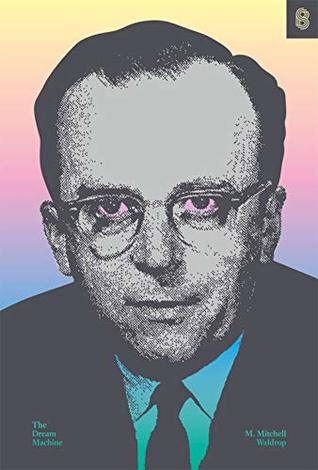M. Mitchell Waldrop - The Dream Machine

My rating: ★★★☆☆ (60%)
This book offers an incredibly detailed history of computing, weaving a narrative through the lens of J.C.R Licklider. Waldrop explains everything from the beginning of computers (analogue computers like Vannevar Bush’s Differential analyzer) to “modern” microchip-based computers of the 1980s.
For someone who started using computers in the late 90s, this book was a great explanation of how computing got to that point.
I gave this book a 60% rating because it was too dense. Waldrop did a great job of connecting all the important events in computing together through places and people. However, there were still hundreds of names and tens of universities and institutions, and I got routinely lost in the overload of information. Maybe when I read this book next time, I’ll try to create a detailed timeline and graph of relationships between projects and people.
There were several key paradigm shifts in computing. They are obvious in hindsight, but at their time, they were always an opinion held by a minority and shunned by others.
- From analogue to digital computers
- Neuman and others designing general-purpose computer
- The idea of the program being stored with the data
- From batch to real-time operation
- Started with TX-0 and TX-2, DEC went to crate PDP computers
- Time-sharing
- When CTSS was introduced in 1961, current “online” patterns started emerging with people sharing ideas, code and files
- Project MAC
- From isolated to networked computers
- ARPA, Ethernet, TCP/IP
- From mainframes to personal computers
- PDP-1, PDP-10, Alto, TX-2, the microchip revolution and Apple II
The key events in the history of computing were:
- 1920s - Automating computations with analogue computers (Vannevar Bush’s Differential Analyzer)
- 1930s - Move from analogue to digital computing - Claude Shannon’s 1937 paper where he used relay circuits for binary logic
- 1940s - ENIAC for computing artillery trajectories where Goldstine, Mauchly, Eckert and Neumann came up with Von Neumann architecture (concept of software - the purpose of computer stored in memory instead of being built-in to the hardware)
- 1950s
- Work on TX-0 that made some believe that personal computing is possible and led directly to the founding of DEC
- McCarthy created LISP at MIT - the first interactive programming language with an interpreter
- 1960s
- CTSS - Compatible time-sharing system created by Corbato
- Lick joined ARPA and started funding research for the man-computer symbiosis vision
- Project MAC - Advances in time-sharing and development of Multics - the spiritual parent of Unix
- UX research lead by Douglas Englebert (see the mother of all demos)
- Outside of academia, batch processing was still the only paradigm, IBM released the System-360
- 1966 - Bob Taylor (ARPA leader) asks Larry Roberts to come to ARPA and start a networking project
- 1969 - first computer connected to ARPANET
- 1970s
- Xerox PARC - brightest researchers went there with Bob Taylor as the hiring manager
- Alto, Smalltalk, Ethernet, Mouse,
- Apple and Microsoft started
- microchip revolution made computing personal - Apple 2
- Xerox PARC - brightest researchers went there with Bob Taylor as the hiring manager
- 1980s
- IBM PC
[[Dream Machine - Detailed notes]]